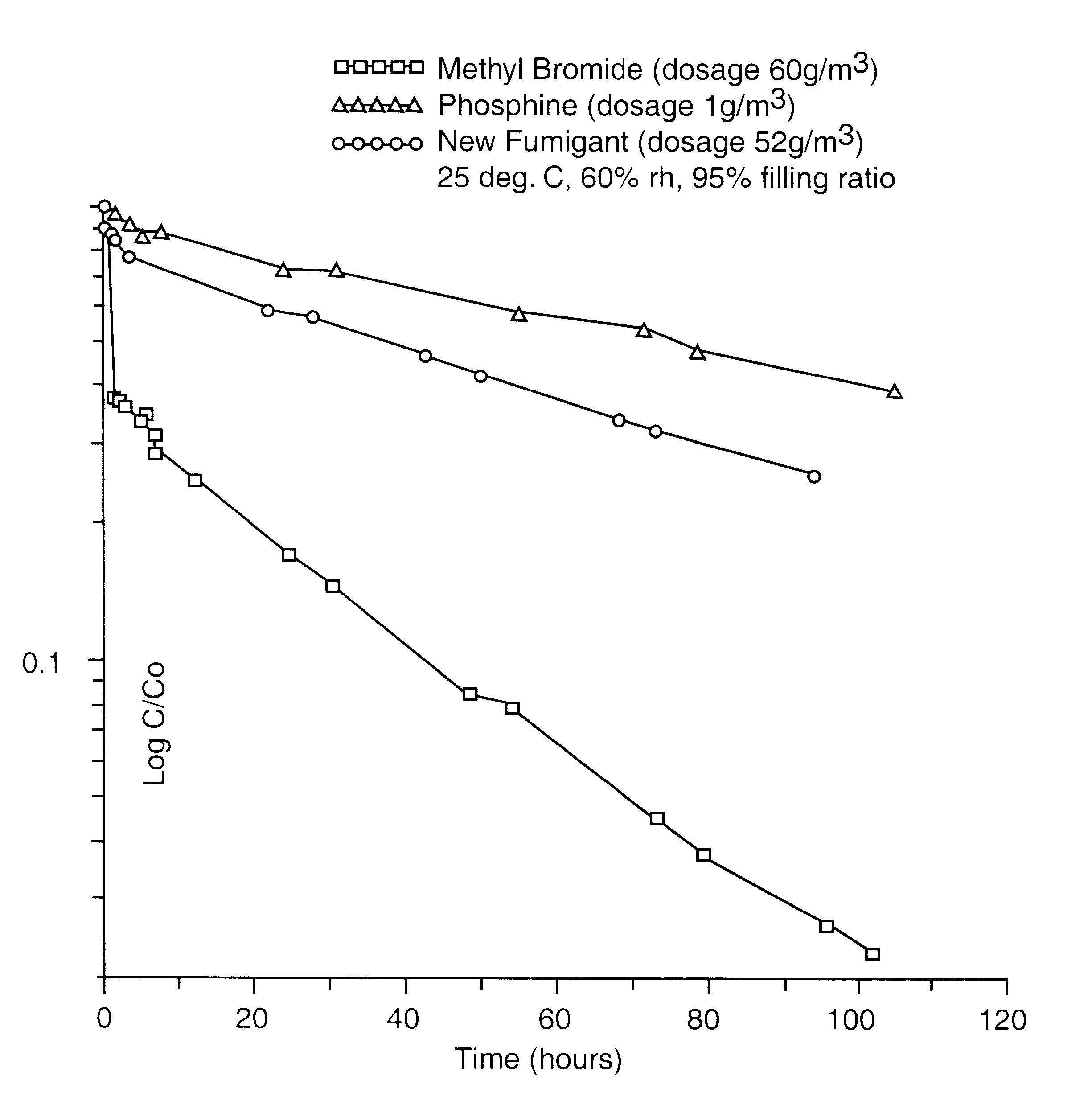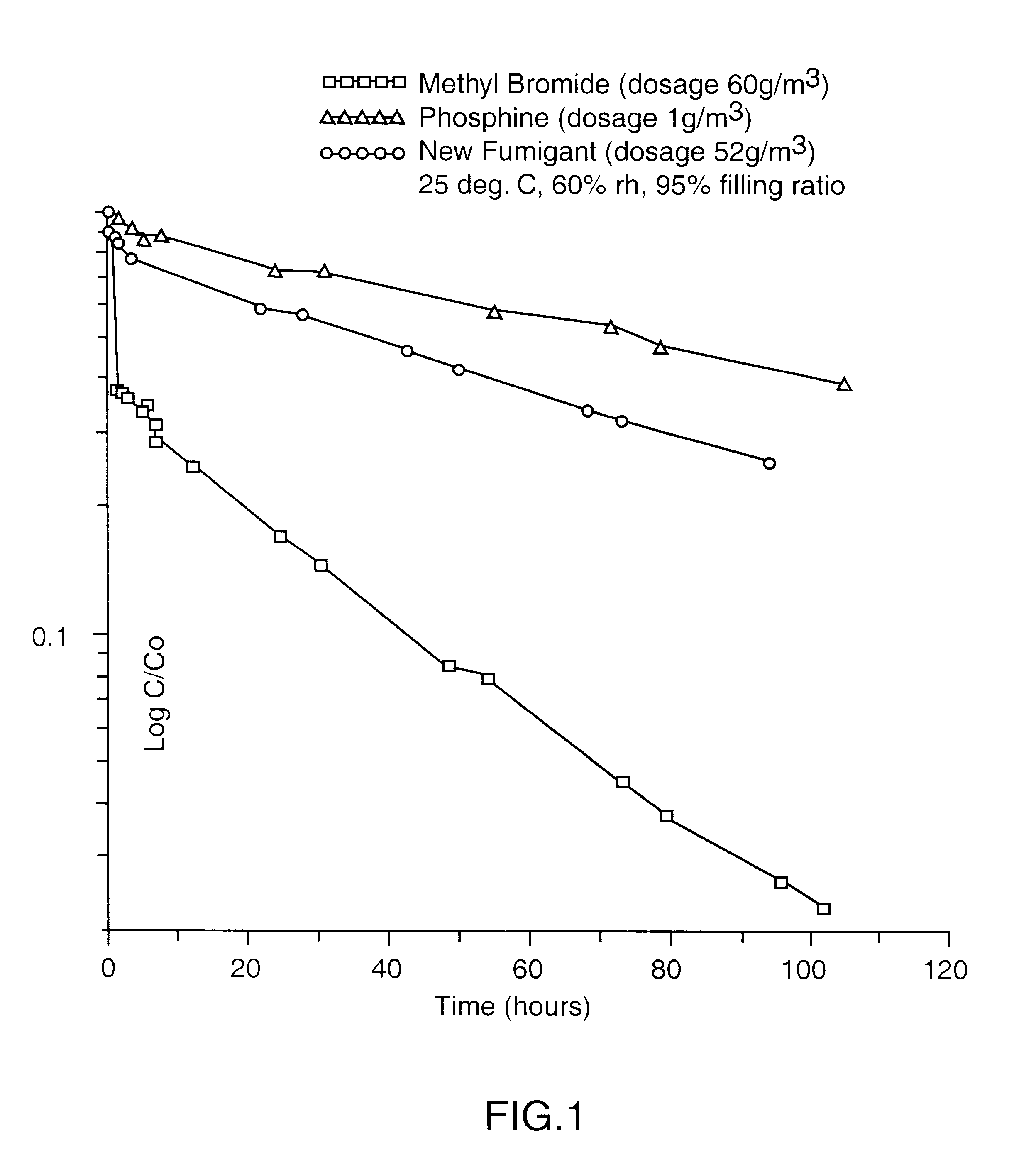Carbonyl sulphide insecticide
- Summary
- Abstract
- Description
- Claims
- Application Information
AI Technical Summary
Benefits of technology
Problems solved by technology
Method used
Image
Examples
example 2
The Effectiveness of Carbonyl Sulphide Against Internal Stages of Stored-product Insects.
In a series of experiments, adults of the grain pest Rhyzopertha dominica were allowed to oviposit for 4 to 5 weeks on 1,000 grams of wheat, maintained at 30.degree. C. and having a moisture content of 12 per cent. In each experiment, the adults were removed from the wheat, which was then divided into three portions; two for dosing with carbonyl sulphide and one for use as a control. Each portion of wheat was then placed in a glass jar having a capacity of 1.1 litre, and the jar was sealed with a screw cap which had been fitted with a septum. A dose of carbonyl sulphide in the range of from 8 mg per litre to 45 mg per litre was injected through the septum. After the assay period (for example, 24 hours), the screw cap was replaced with filter paper, to enable the fumigant to be aired. The wheat was then stored at either 25.degree. C. or 30.degree. C. The emerging adults were counted at weekly int...
example 3
The Effectiveness of Carbonyl Sulphide in the Control of Stored-product Mites and Psocids.
A series of assays was conducted to demonstate the effectiveness of carbonyl sulphide against adult wheat mites and psocids (species Liposcelis bostrychophilus). The methodology of the assays of adult external stages of stored-product insects, described above in Example 1, was used, except that 3 grams of wheat (containing 18 per cent moisture) and approximately 100 mg of brewers yeast were added to the glass jars before the addition of approximately 200 psocids. After exposure of the psocids to carbonyl sulphide for either six hours or 24 hours, the sealing caps were removed from the jars and, after 1 hour of airing, the jars were closed with thin plastic material. The assays were conducted at 25.degree. C., 75 per cent relative humidity. The number of mobile mites was counted at the end of the exposure to the carbonyl sulphide and the mortality was assessed after a holding period of five days...
example 4
The Efficacy of Carbonyl Sulphide in the Control of Fruit Flies.
Bioassays of the effect of carbonyl sulphide on the external immature stages of the Queensland fruit fly, Bactrocera tyroni (Diptera: Tephritidae) were conducted in the same manner as the assays of the immature external stages of stored-product insects in Example 1, except that
(a) when using eggs, the filter paper strips were damp when subjecting the eggs to a dose of carbonyl sulphide, and
(b) one drop of water was added to each jar for larvae prior to the addition of the insects.
The assays with eggs, feeding larvae and pupae of B. tyroni were conducted at 30.degree. C. The results are shown in Tables 11, 12 and 13 for, respectively, pupae, late instar larvae and eggs of B. tyroni.
PUM
 Login to View More
Login to View More Abstract
Description
Claims
Application Information
 Login to View More
Login to View More - R&D
- Intellectual Property
- Life Sciences
- Materials
- Tech Scout
- Unparalleled Data Quality
- Higher Quality Content
- 60% Fewer Hallucinations
Browse by: Latest US Patents, China's latest patents, Technical Efficacy Thesaurus, Application Domain, Technology Topic, Popular Technical Reports.
© 2025 PatSnap. All rights reserved.Legal|Privacy policy|Modern Slavery Act Transparency Statement|Sitemap|About US| Contact US: help@patsnap.com


